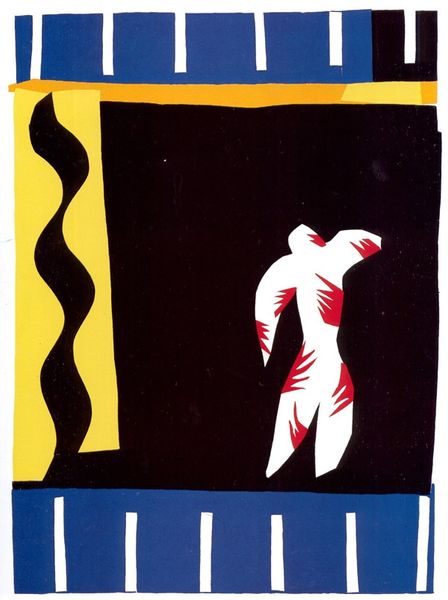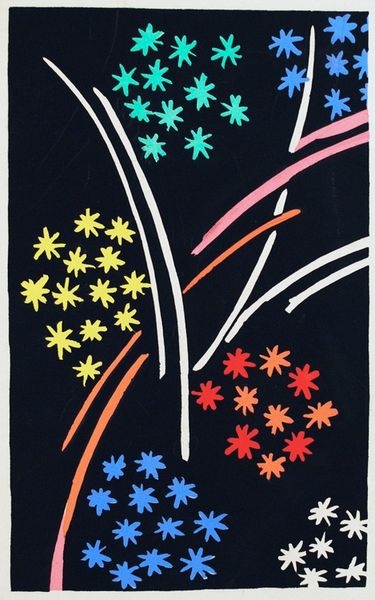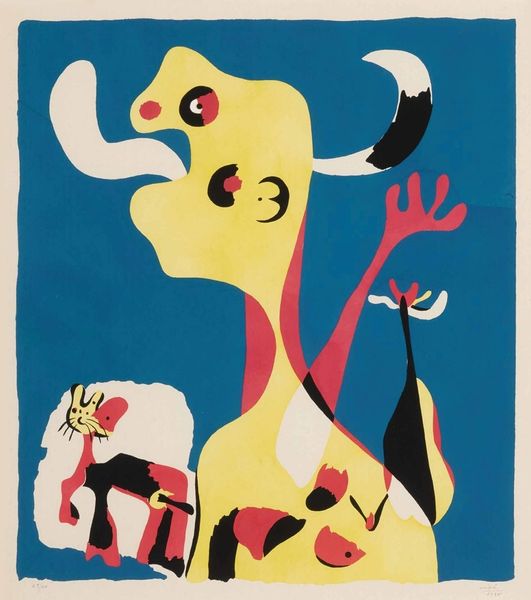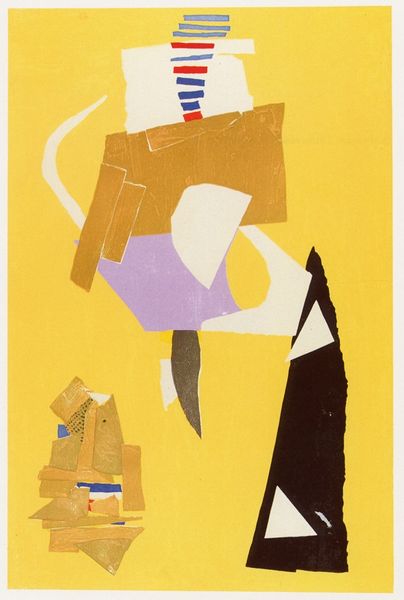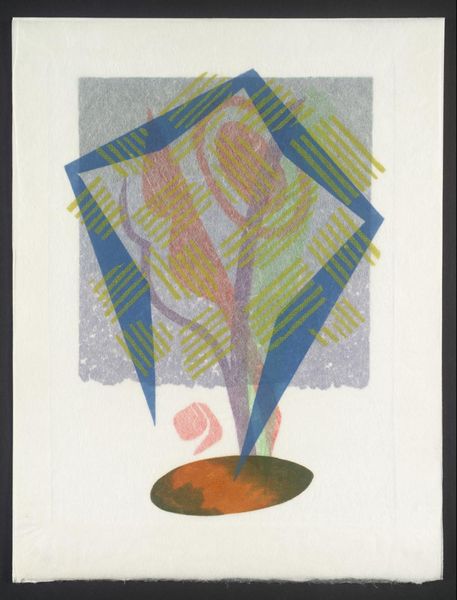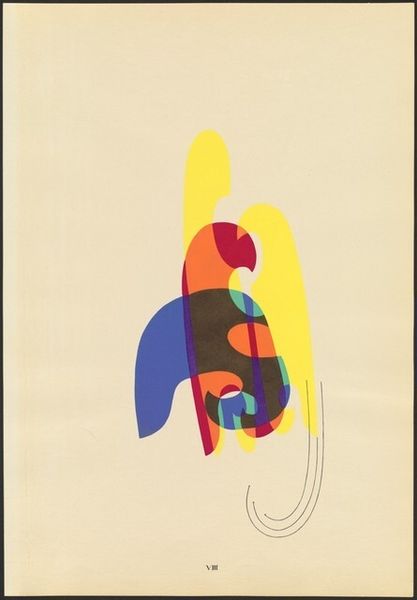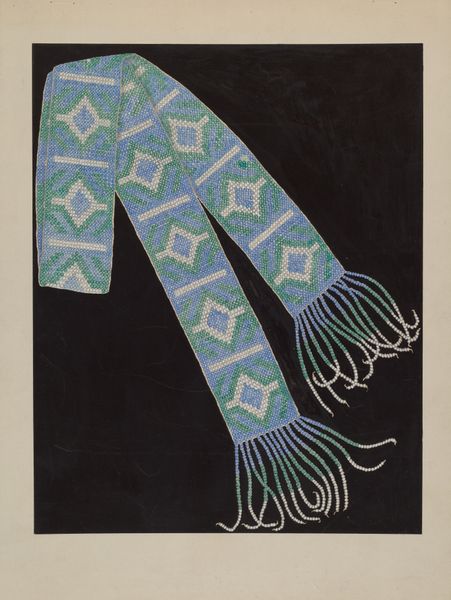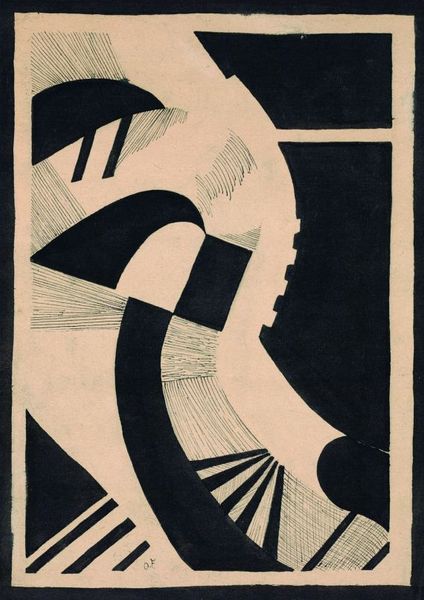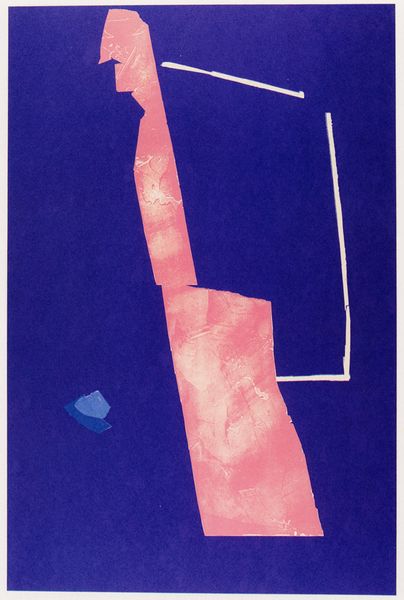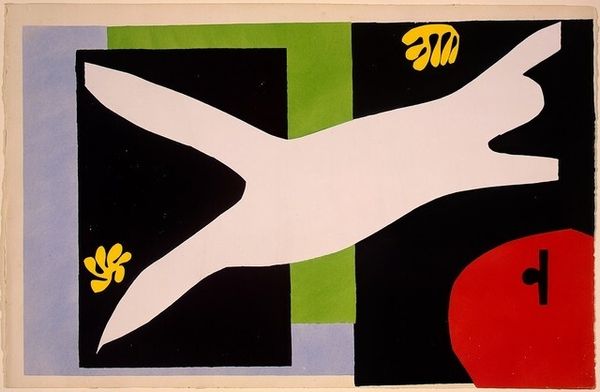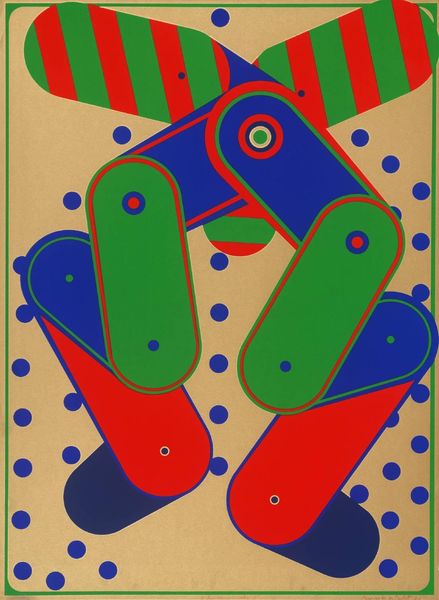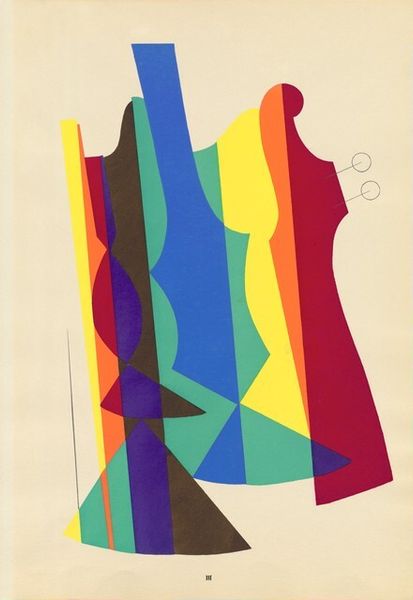
Copyright: Henri Matisse,Fair Use
Curator: Look at this exuberant mixed-media collage titled "The Circus," created by Henri Matisse in 1943. What’s your immediate take? Editor: It’s got this playful, almost jazzy rhythm! A simple palette, yet the shapes sing – especially that central white form… Is it a head? A vase bursting with strange botanical fireworks? Curator: A brilliant interpretation! Matisse created this piece during a really tough period of the Second World War when his health was failing. Bedridden, he embarked on these cut-outs, what he called "drawing with scissors," and later grouped together as 'Jazz', it really feels like a liberation. Editor: So, the bold simplicity wasn’t just an aesthetic choice, but a direct consequence of his circumstances? The institutional gaze often misses those personal resonances... knowing it's titled 'The Circus' just makes it wilder. Curator: Absolutely. What fascinates me is the way Matisse subverts our expectations. There are indeed these dynamic shapes suggestive of acrobats or even clowns, and then you get a hint of caricature and playfulness. These motifs became vital to his later practice and reflect this idea of seeing beyond our visual preconceptions. Editor: I see that push and pull—it has something vital and immediate. You know, thinking of circuses in 1943, with all the constraints on daily life, there's something defiant about the very idea of bold color and dynamic forms, against the bleakness. Curator: Yes, indeed—precisely that feeling of liberation during wartime. His use of negative space here makes a profound statement, emphasizing forms but equally giving importance to what isn’t physically there, hinting at endless possibilities. Editor: It’s curious to think of the constraints actually fueling a visual breakthrough – that perhaps freedom can arrive out of confinement. It gives "The Circus" so much poignancy. Curator: Seeing "The Circus" always makes me think about how artistic choices arise as a form of conversation; he was talking with the world and with himself through colour, and making quite an exuberant sound. Editor: It is pretty joyful. Perhaps Matisse just wanted us to remember the possibility of joy even when things are their darkest.
Comments
No comments
Be the first to comment and join the conversation on the ultimate creative platform.


